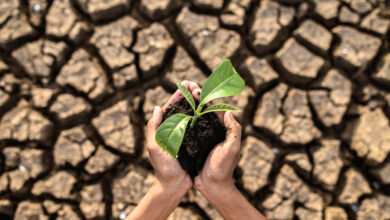Hydroelectric Power: Tapping into the Benefits of Renewable Energy from Flowing Water

Here are the benefits and challenges of hydroelectric power generation and its role in the global transition towards a more sustainable energy future.
The quest for sustainable and renewable sources of energy has become paramount in our rapidly evolving world. As concerns over climate change and the depletion of finite fossil fuel reserves grow, the need to transition towards cleaner and more sustainable energy alternatives becomes imperative. Hydroelectric power, derived from the kinetic energy of flowing water, is one of the oldest and most widely used renewable energy sources on the planet.
Understanding Hydroelectric Power
Hydroelectric power generation involves the conversion of energy from flowing or falling water into electricity. This process harnesses the potential energy stored in water due to its elevation or flow rate and converts it into kinetic energy to turn turbines connected to electrical generators.
Globally, India is the fifth largest producer of hydroelectricity with a capacity of 47,057 MegaWatt (MW).
Benefits of Hydroelectric Power
Less Pollution
Hydroelectric power is a clean and green energy option that produces minimal greenhouse gas emissions, making it an essential player in the fight against climate change. Unlike fossil fuels, it does not release harmful pollutants such as sulfur dioxide, nitrogen oxides, or particulates into the atmosphere.
Renewable and Sustainable
Water is a naturally replenishing resource, making hydroelectric power a renewable and sustainable energy option. As long as rivers keep flowing and rainfall occurs, the potential for generating electricity from hydropower remains constant.
Energy Storage and Grid Stabilization
Impoundment systems serve as energy storage reservoirs, allowing for the generation of electricity during peak demand periods or when intermittent renewable sources like solar and wind are not producing. This feature helps stabilize the power grid and ensures a reliable energy supply.
Long Lifespan and Low Operating Costs
Hydroelectric power plants have a longer lifespan compared to many other energy infrastructure projects. Once constructed, they have low operating and maintenance costs, making them economically advantageous in the long run.
Flood Control and Water Management
Large dams used in impoundment systems help regulate river flows, providing flood control in downstream areas. Additionally, these dams can assist in water management for irrigation and supply purposes, contributing to agricultural and human water needs.
Challenges and Concerns
Endangering aquatic life
The construction of large dams can lead to habitat destruction and fragmentation, affecting aquatic ecosystems and fish migration patterns. Reservoirs may alter river ecosystems, impacting flora and fauna in the area.
Limited Suitable Sites
Not all regions have suitable conditions for hydroelectric power generation. The availability of consistent water flow and appropriate topography are necessary prerequisites.
Climate Change and Water Availability
Climate change may impact the availability of water resources, affecting the efficiency and reliability of hydroelectric power plants in certain regions.
Conclusion
Hydroelectric power remains one of the most significant contributors to global renewable energy generation. As technology and engineering practices continue to evolve, it is essential to strike a balance between harnessing the power of flowing water and preserving our natural ecosystems for generations to come.
With its pioneering climate action platform, The Disposal Company is leading the charge towards a sustainable future in India, enabling brands to go plastic-neutral and carbon-neutral with ease. Discover more here.




